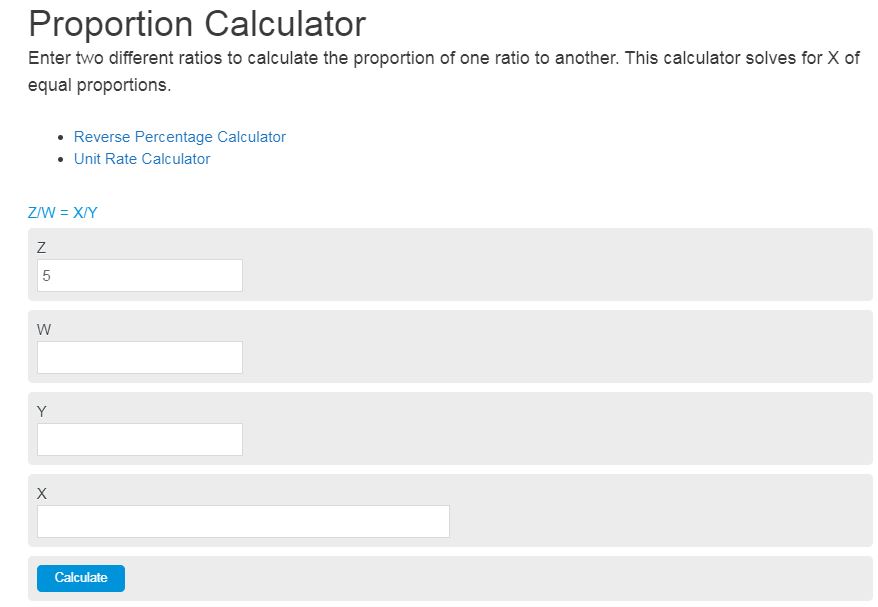Enter two different ratios to calculate the proportion of one ratio to another. This calculator solves for X of equal proportions.
- Reverse Percentage Calculator
- Direct Variation Calculator
- Constant of Proportionality Calculator
- Common Ratio Calculator
Proportion Formula
The following formula is used to calculate the missing value of a proportion.
X = Z/W * Y
- Where X is the missing value
- Z/W is the first proportion
- Y is the denominator of the second proportion
Proportion Definition
In simple terms, a proportion is a relationship between two different quantities. These quantities are typically represented as two different ratios.
These ratios comprise a numerator (top number) and a denominator (bottom number). This term is typically referred to as a fraction.
How to Calculate a Proportion
Let’s say you have 7 pieces of pie out of 12 total pieces. This ratio is 7/12. Now you look over and see your friend has 3 pieces of pie out of 12, which is a ratio of 3/12. Now you want to compare the proportion of your slices to his slices, or 7/12: 3/12.
The first step is to convert these to a solid integer proportion, you typically need to convert to the least common denominator and then you cross out the denominators and you have your proportion of 7/1: 3/1.
FAQ
How do you find the missing value in a proportion?
To find the missing value in a proportion, you can use the formula X = Z/W * Y, where X is the missing value, Z/W is the first proportion, and Y is the denominator of the second proportion.
Can proportions only involve whole numbers?
No, proportions can involve any numbers, including fractions and decimals, as long as the relationship between the quantities remains consistent.
Why are proportions important in real life?
Proportions are important in various real-life applications such as cooking, where ingredients need to be mixed in a certain ratio, or in construction, where dimensions need to be scaled accurately. They are also crucial in fields like mathematics and science for solving problems.
How can you check if two ratios form a proportion?
To check if two ratios form a proportion, you can cross-multiply the terms of the ratios. If the cross-products are equal, then the two ratios form a proportion.

